“They said, when we came to Kanev on our boats, we saw the church aloft”
Nowadays, Kiev Pechersk Lavra is a famous male monastery. Yet, not many people are aware of the historical fact that the Kiev Pechersk cloister initially accommodated both a nunnery and a monastery, representing a unique combination of female and male monastic communities and an abode for all people who endeavoured to learn their inner spiritual world, regardless of their nationality, age or sex. The nunnery (maiden convent), further referred to as the Ascension Convent, was an integral part of the Pechersk monastery complex and occupied one of central locations on the “holy mountain” – the place indicated by the Mother of God to Elder Antony.
In the Kiev Pechersk Patericon it is mentioned as initiation of the Great Lavra Church devoted to the Most Holy Mother of God. When construction had to be started, Elder Antony prayed for three days so that God would designate a place for the church.
And on the first night when he prayed, the Lord appeared to him and said: “You have gained grace in front of me.” Antony responded: “Lord! If I have gained grace in front of you, let dew be all over the land, while the place you decide to sanctify be dry.” In the morning, the place where the church is now located was found dry, whereas the entire land around was dewed. On the other night Antony prayed again and said: “Let all the land be dry, and the sacred place be dewed.” And they found as he said. On the third day they came to that place, prayed, blessed it and measured the width and length with a golden sash. And, having lifted up his hands to the heaven, Antony said in a loud voice: “Hear me, Lord, designate the place with fire now, may everyone know this is the place you wish.” And the fire immediately came from the heaven and burned all trees and bushes, vaporized the dew and scorched the valley which was like a ditch. And everyone who stood with saints fell of fear, as if dead. That was how the divine church was initiated.

This place is quite unique itself. On this hill monks, nuns and parishioners who lived near the monastery noted unusual phenomena: “a pillar of fire appeared, the earth to the sky in height”, “there was the light shown by God”, “a church was seen in the clouds”, “a great fire emerged”. Once, people who lived close to the monastery heard singing; they left their houses and “saw the place aloft from where the voice was coming. A great light was above the monastery, and many monks were coming from old churches to the future designated place, carrying icons of the Holy Mother of God.” These are records of Nestor the Chronicler who emphasized that the place designated by God was on the mountain top where angels ascended with candles, singing and carrying the icon of the Most Holy Mother of God. It’s the home of the Blessed Virgin and the heavenly gate open for indescribable God’s grace [2].
In 1062, the land on that hill (the Berestov Mount) was granted to the monastery by Prince Iziaslav at the request of Father Superior Varlaam (the first Father Superior of Kiev Pechersk Lavra) [1]. It’s noteworthy that in official chronicles we can hardly find any records of the nunnery (the Ascension Convent) in Kiev Pechersk Lavra, even records of the date of its establishment. Moreover, since the 17-18th centuries the Great Lavra Church was falsely associated with the Church of the Assumption. No wonder! For exactly at that time processes took place in Kiev which favoured intentional concealment of the true history of Kiev Pechersk Lavra and the nunnery existence within in. How could this happen that such a wonderful, unique interaction between women and men in their service to God was lost in history? In 1711, by the decree of Tsar Peter І the Ascension Convent of Kiev Pechersk Lavra was moved to Podol, i.e. merged with Florovsky Convent. In 1712 the stone church of the Ascension Convent gained the status of a parish church, which later on was dismantled during the reign of Empress Catherine or in 1798 according to other records [8, p.868-874]. Quite interestingly, in 1718 there was a conflagration in Lavra, when all wooden buildings, ancient documents, manuscripts and Lavra library were burned down [4, p.151; 8, p.58; 16, p.70]. In 1811 a conflagration happened in Florovsky Convent (where the Ascension Convent had been moved in 1711), and the monastery archives were burned to ashes [14]. In two years (in 1813) another conflagration took place in Kiev Pechersk Lavra library [8, p.69]. Amazing fortuities, though they say nothing happens by mere chance. Thereafter, people started identifying the Ascension Convent with Florovsky Convent, confusing its location or asserting there’s only one female cloister in Kiev, i.e. in Podol. Moreover, the Great Lavra Church started to be falsely associated with the Church of the Assumption.
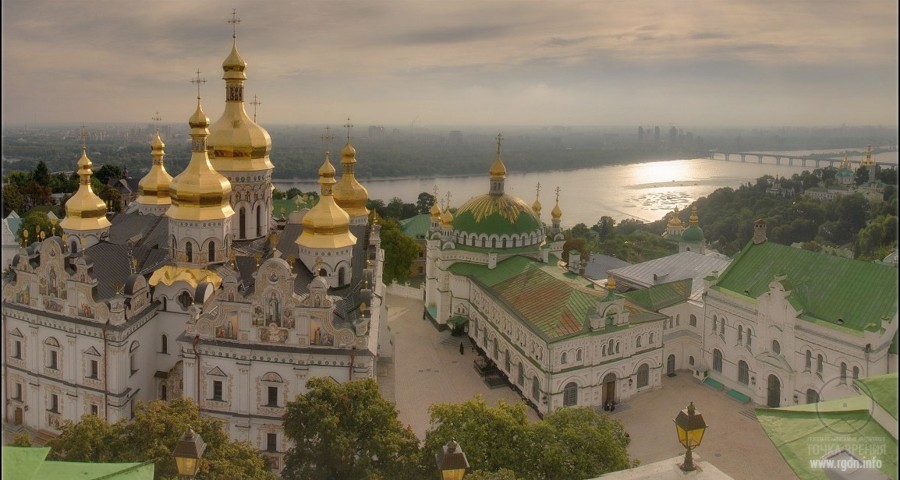
At that, if we thoroughly examine the issue of the time of the Ascension Convent establishment, numerous indirect facts are found evidencing the existence of Kiev Pechersk Lavra nunnery (maiden convent) already in the 11th century. There were over four hundred churches in Old Kiev, including female cloisters. Very few of them are mentioned in chronicles. Records of the year 1113 of the Hypatian Chronicle mention the following:
... Mother Superior of Lazarev Convent (her name is not mentioned) passed away, having spent 60 years in monkhood, and at the age of 92 /full collection of Russian chronicles, Volume 2, p.4/. In 1116 nun Predslava, daughter of Sviatoslav, passed away /same source, p.8/” [17, p.50-51].
A very important point for understanding of the Russian spiritual culture is that initially Virgin Mary and Archangel Gabriel were considered the protectors of Kiev City. Russian people revered them jointly everywhere. Churches of the Annunciation were established in their honour, and frescoes with Archangel Gabriel and Virgin Mary were painted in sanctuaries of many ancient churches. Thus, on top of the Golden Gate Prince Yaroslav the Wise arranged a church of the Annunciation devoted to Archangel Gabriel and Virgin Mary, so that they took Kiev lands under their protection. Above the iconostasis of St. Sophia Cathedral a mosaic image of the Annunciation (Mary and Gabriel) is depicted, under which there is an inscription in Greek: “Rejoice, you highly favoured one! The Lord is with you. Blessed are you among women”, and on the semi-dome of the Cathedral sanctuary there is the Virgin Orans (Oranta) image, being a symbolic depiction of the AllatRa sign, the unbreakable wall.
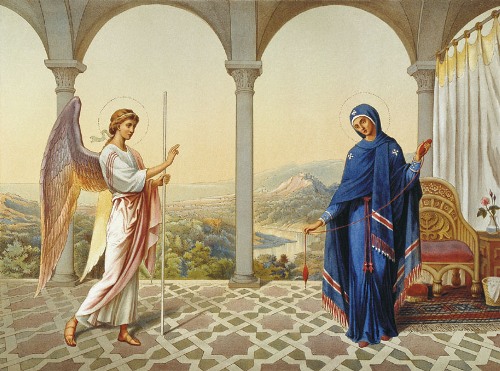
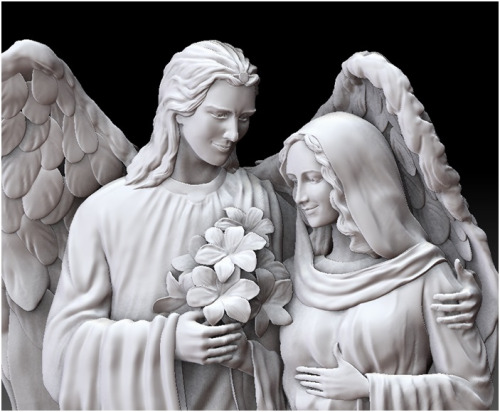
The issue of symbols arose in different times. In an article devoted to the State Emblem of Ukraine, published in a 1918 newspaper, there was an interesting allusion that Archangel Michael had been on the emblem of Kiev Voivodeship (in Polish times), the emblem of Kiev Magistrate during several past centuries, and the emblem of Kiev Province, that is starting from the 17-18th centuries only. Professor Grushevsky noted the emblem with Archangel Michael had no Ukrainian tradition behind it [p.119-121 Our Past. – Magazine, 1918. Issue No. 1].
St. Sophia Cathedral was the central church complex, the spiritual pearl of Kiev. In chronicles it was called the metropolis which meant not just a cathedral church complex, but also the main church complex of the entire state (the Dean of St. Sophia Cathedral was the Metropolitan Bishop of entire Rus) [4, p.129]. The city was being constructed spirally from the Cathedral [6, Tolochko. Historical Topography of Old Kiev]. The Regulations of Courts and Church Affairs, which are mentioned in St. Sophia Cathedral description, contain a resolution regarding nuns [9]. The structure of the church complex, in particular the arrangement of symbols and signs was duplicated in other cities, though on a smaller scale (e.g. Novgorod the Great, Polotsk) [11], as well as in Kiev monasteries:
*The Church of the Assumption is meant here, because the Church of the Ascension was dismantled by that time.
From the earliest times, female and male cloisters were located jointly in Russian lands, making up single monastery complexes. The heedful Slavic soul felt the deep sense of the Christian teaching as a religion of the Mother of God and reflected the knowledge of spiritual signs and symbols in their lifestyle. By an ancient custom, nunneries were usually constructed close to male monasteries, so that the distance would not prevent monks from performing religious rites in nunneries [8, с.51]. Since the construction in the 11th century, St. Irina’s Convent and St. George’s Monastery were located in St. Sophia; the Theologian Maiden Convent was near St. Michael’s Golden-Domed Monastery, and Jordanian St. Nicholas Convent was placed under the jurisdiction of St. Cyril Monastery. The oldest monastery in Pechersk (St. Nicholas) also combined a nunnery, where the mother of Reverend Theodosius took the veil, and a male cloister built in the 11th century by Olma in honour of Askold whose Christian name was Nicholas [3, p.66-67; 8, p.51]. In other words, the female and male cloisters were initially combined in the monastery complex [10, p.78-53]. Moreover, it can be added that Anastasia, the daughter of Yaropolk Iziaslavovich and the famous benefactor of Kiev Pechesk Lavra, granted Lavra the rights to St. Dmitry (St. Michael’s) Monastery [3, p. 152] which accommodated both female and male cloisters. It becomes obvious that the nunnery (the Ascension Convent) did exist in Lavra since establishment of the latter.
It is noteworthy that nunneries, maiden convents in Kievan Rus existed without any names for a long time or were named after neighbouring male cloisters. For instance, a convent located near St. Michael’s Monastery historians later called the Theologian. Thus, the Ascension Convent gained its name in the course of its development, when Elisey Pletetsky divided female and male communities of Kiev Pechersk Lavra (1599-1624), and when the first Mother Superior emerged there [8, p.287-289].
As mentioned above, the Great Lavra Church devoted to the Most Holy Mother of God was constructed right on the top of the Berestov Mount located between Lavra and Berestove Village. Still today, entering Kiev Pechersk Lavra territory through the Holy Gate, you can notice yourself descending towards the Assumption Cathedral. At that, the Ascension Convent was situated opposite the Holy Gate, right on the Berestov Mount top. In the 18th century the Arsenal was built on that spot. When excavations of the Arsenal territory took place, archaeological materials were discovered and dated to the Old Russian period (11-12th centuries): fragments of plinfa (ancient bricks), cement mortar remains, slate splinters, separate smalt pieces, and glass bracelet elements. Such materials were found all over the Arsenal yard, though with not marked construction objects of the 12-13th centuries [13]. It is known that the Ascension Convent architectural ensemble included at least four stone buildings: a cathedral, a bell tower, a refectory, and an external bricked monastery fence. While the area was being examined, remains of a single big building (Excavation I, Object No.3) and no traces of other buildings were found. Therefore, archaeologists assume other buildings were thoroughly dismantled when the Arsenal fortress was in construction. [13, p.9-23]


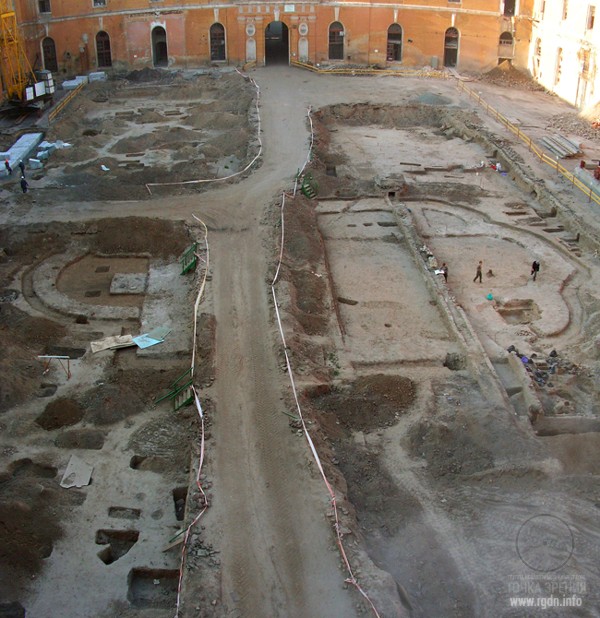
When excavations took place in Pechersk Arsenal area, an on-neck icon of Our Lady of the Sign was found. Such iconographic depiction of the Mother of God was widespread in Kievan Rus since the 12th century. Detailed information about the meaning of spiritual signs and symbols on the icon in available in the AllatRa book by Anastasia Novykh [11].


An engraving that depicts the Church of the Ascension and dates back to the first half of the 18th century has been preserved until today.
“… the architecture, for instance, of a Christian church contains the basic Knowledge: a square-shaped, four-leaved structure with a centre, a cylindrical central room, and  pyramidal architecture of the entire building. This architecture may also be crowned with a pyramidal spire or onion-shaped domes with a pointed element. All this corresponds to the symbolism of the human energy structure, the path of liberation of one’s Soul: the four Aspects, the Soul as the centre, the personal space, the pyramidal structure, architectural symbols of transformation of a square into a circle or octagon (a symbol of the cube). And it is clearly shown that in the Christian religion it is the creative divine power of the feminine principle that plays the main role of the real Guide from the human world to the spiritual world. It goes through the main female images of Christianity – Virgin Mary, Mary Magdalene… People separate the images, but their essence is the same – the divine Love, the Mother of God, that which through Love revives communication with God in man, restores one’s bygone connection with Him through the Soul. It is the spiritual, good power of Love and Creation of the Mother of God that is the main guiding and performing power from God!” (from the AllatRa book [11])
pyramidal architecture of the entire building. This architecture may also be crowned with a pyramidal spire or onion-shaped domes with a pointed element. All this corresponds to the symbolism of the human energy structure, the path of liberation of one’s Soul: the four Aspects, the Soul as the centre, the personal space, the pyramidal structure, architectural symbols of transformation of a square into a circle or octagon (a symbol of the cube). And it is clearly shown that in the Christian religion it is the creative divine power of the feminine principle that plays the main role of the real Guide from the human world to the spiritual world. It goes through the main female images of Christianity – Virgin Mary, Mary Magdalene… People separate the images, but their essence is the same – the divine Love, the Mother of God, that which through Love revives communication with God in man, restores one’s bygone connection with Him through the Soul. It is the spiritual, good power of Love and Creation of the Mother of God that is the main guiding and performing power from God!” (from the AllatRa book [11])
Now, let’s examine the said engraving in more detail, in the light of aforementioned knowledge: a truncated pyramid in the middle of which there is a cross with a heading; onion-shaped domes with a pointed heading – a cross with a crescent (the cross of Virgin Mary) on the top. Please, note the crosses on the Church of the Ascension. The following can be read about a cross with a crescent, i.e. the cross of Virgin Mary: “Such cross is a whole book for people initiated into the secret of spiritual Knowledge and the genuine spiritual teaching of Jesus. It is a personal symbol of Virgin Mary as Jesus’ disciple who achieved spiritual liberation during her lifetime and stayed to help people even after her physical death.” [11]
There are also extant images of the Rudnenskaya icon from the Ascension Convent of Kiev Pechersk Lavra. An amazing story is associated with emergence of the icon of the Mother of God. On the night of 25 October 1689 priest Vasily brought this icon from Rudni village (near Chernigov). They wanted to place it within the Lavra territory, but the priest stated the icon was intended specifically for the Ascension Convent of Kiev Pechersk Lavra [8, Velichko V.III, p.88]. At that, we 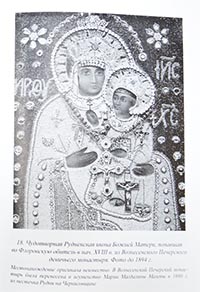 should recall the Ilyinsky Convent of the Holy Trinity emerged when the founder of Kiev Pechersk Lavra St. Antony was in Chernigov (1069), and so icon transfers from one convent to the other were quite natural. The interconnection between the said two convents is also evidenced by the fact that Chernigov convent caves are very similar to those of the Lavra. Thus, in the Ilyinsky Convent of the Holy Trinity there is a complex of multi-tiered caves (4 floors) dating back to the 11-12th centuries, including galleries, monastic cells and churches. Lavra caves researcher S.V. Khvedchenia in his book Mysteries of Kiev Pechersk Lavra: Caves and Hidden writes that caves in Kiev Pechersk Lavra are multi-tiered and provides relevant examples. Multi-tiered caves exist in other places in Kiev as well: Cherkovschina caves, Zverenetsky caves, etc. It’s noteworthy that the establishment of Sviatogoskaya Lavra is also attributed to Kiev Pechersk Lavra monks, and caves in that Lavra are multi-tiered as well: the lower tier contains a church necropolis, the second tier was assigned for accommodation and services, while on the upper tier there was the Church of the Assumption of the Most Holy Mother of God [1, p.24]
should recall the Ilyinsky Convent of the Holy Trinity emerged when the founder of Kiev Pechersk Lavra St. Antony was in Chernigov (1069), and so icon transfers from one convent to the other were quite natural. The interconnection between the said two convents is also evidenced by the fact that Chernigov convent caves are very similar to those of the Lavra. Thus, in the Ilyinsky Convent of the Holy Trinity there is a complex of multi-tiered caves (4 floors) dating back to the 11-12th centuries, including galleries, monastic cells and churches. Lavra caves researcher S.V. Khvedchenia in his book Mysteries of Kiev Pechersk Lavra: Caves and Hidden writes that caves in Kiev Pechersk Lavra are multi-tiered and provides relevant examples. Multi-tiered caves exist in other places in Kiev as well: Cherkovschina caves, Zverenetsky caves, etc. It’s noteworthy that the establishment of Sviatogoskaya Lavra is also attributed to Kiev Pechersk Lavra monks, and caves in that Lavra are multi-tiered as well: the lower tier contains a church necropolis, the second tier was assigned for accommodation and services, while on the upper tier there was the Church of the Assumption of the Most Holy Mother of God [1, p.24]
People have always been interested in Lavra caves with which numerous legends are associated. In particular, legends say that underground passages stretch from Lavra caves for several hundreds of kilometres towards Chernigov, Novgorod the Great and Moscow. Other legends tell about an underground passage under the Dnieper River. Hence, researchers decided to compare ancient cave maps to the currently existing passages. Cave archaeologists have confirmed nearly everything. In the Near Caves, bricked-up passages of 141.7 metre length were opened near the tombs of Nestor the Chronicler and Mercurius. These sections of “empty caves” were included in 1661 and 1744 maps and led to the Upper Lavra, the Assumption Cathedral, and the Ascension Convent of Kiev Pechersk Lavra [1].
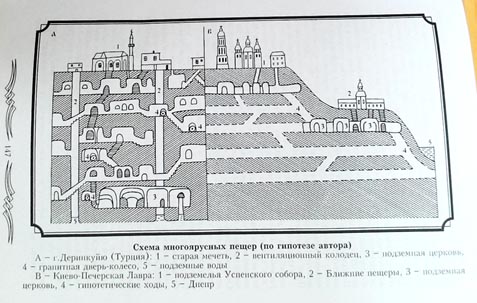
Due to earth clefts, numerous underground passages and galleries were found in the Upper Lavra: between the Assumption Cathedral, Refectory Church and print shop (1863), near the Great Lavra Bell Tower (1894), near the 7th (economic) building (1948, 1954, 1963), 40 metres southwest of the Great Lavra Bell Tower (1950), in Metropolitan Bishop’s garden (1951), near the second building (1963), Pechersk Arsenal (30, Yanvarskoho Vosstaniya Str.; when this underground area was explored in 2005-2006, it was attributed to the Ascension Convent). When the ground cleft in 1958 (to the north of the Gate Church of the Trinity) underground galleries were found at the depth of 7 metres (2 m in height and 1 m in width) constructed in the 17-18th centuries, but the galleries layout is similar to that of underground structures of St. Sophia Cathedral and St. Michael’s Golden-Domed Monastery built in the 11th century (p.39-40, Bobrovsky). Apparently, the entrance was initially located from the monastery side, and only later the galleries were joined by underground passages [14].
Do you know why the Kiev Pechersk Lavra nunnery, further referred to as the Ascension Convent, was called the maiden convent? This was not because many of the convent novices, ascetics and nuns were from noble families. The epithet maiden reflected the inner spiritual purity, genuine service to God, aspiration for spiritual liberation and for true happiness of knowing the boundless divine love!
Thus, owing to the joint emergence of the female and male cloisters, Kiev Pechersk Lavra became the home of the Most Holy Mother of God. It was a unique church complex filled with the Holy Spirit grace and containing spiritual signs and symbols which helped those who followed the path to God. In all times there have been people who truly serve God, neither giving any external promises, nor calling themselves monks, nor obeying any regulations or rules of monastic life. Nonetheless, such people are the ones who serve the Spiritual World with their own life, freely and voluntarily. It is natural for every human being to feel love and reside in it. Such people were exactly the ones who laid the cradle of Orthodoxy, our national heritage, the home of the Most Holy Mother of God in Kiev Pechersk Lavra, and they laid it in love, purity, sincerity of their intentions, as well as in creative harmony between women and men who devoted themselves to God and chose to serve Him.
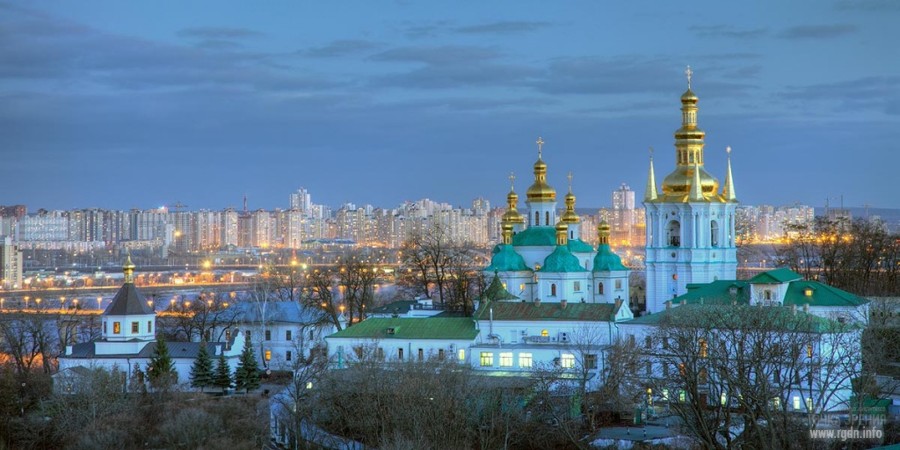
The article is composed based on materials contained in the book Historical and Statistical Description of Kiev Florovsky Ascension Convent (Kiev. Print Shop of S.V. Kulzhenko, 4 Novo-Yelisavetskaya Str., 1894, p. 47-57)
Nowadays, just like many years ago, people write down wise words and sayings that are consonant with their inner world. Such words often reflect simple truths and eternal values for the soul, expand one’s world outlook, represent people’s experiences, or simply evoke a positive emotional and mental state. Let’s read the rules of monastic life, written down by a nun of Kiev Florovsky Ascension Convent, as dictated by her spiritual counsellor celibate priest Parfenius:
Perhaps, you have noticed these rules are more like advices. They resemble notes or observations of a wayfarer who’s following the path of learning God and achieving inner unity.
Peace be with you!
Literature:
1. S.V. Khvedchenia. Mysteries of Kiev Pechersk Lavra: Caves and Hidden Treasures. – Kiev, Geographica, 2004
2. Father Superior Seraphim. Kiev Pechersk Lavra History. Book 1 (11th century – first half of the 13th century)
3. N.I. Petrov. Historical and Topographic Essays on Ancient Kiev (with Kiev map dated 1638). – Kiev: Print Shop of St. Vladimir Imperial University, N.Т. Korchak-Novitsky, 4 Mikhaylovskaya Str., 1897
4. Readings in the Historical Society of Nestor the Chronicler. Book 5 / edited by М.F. Vladimirsky-Budanov, 1891. – V. 43, 182, p.148-149
5. Description of St. Sophia Cathedral (Kiev) after its renovation in 1843-1853 / Print Shop of Theophilus Gluksberg, Kiev, 1854
6. P.P. Tolochko. Historical Topography of Old Kiev (1970, 1972)
7. N.M. Zakrevsky. Kiev Description, V. 2, p.686
8. I.V. Zhilenko. The Shrine
9. Ancient St. Irina’s Church in Kiev, established by Prince Yaroslav the Wise / Book 12 of the Ministry of Public Education Journal, 1836
10. A.N. Muravyov. Kiev, p.78-53
11. A. Novykh. AllatRa
12. O.O. Krayniaya. Kiev Pechersk Nunnery in the 16th – Early 18th Centuries, and the Destiny of Its Monuments / Centre for Monument Studies of the NASU, National Kiev Pechersk Historical and Cultural Reserve, 2012. – p.127
13. G.U. Ivakin, S.A. Balakin. Excavations in Old Kiev Arsenal area in 2005–2007. – Lavra Almanac 21. Special edition 8, p.9-23
14. Т.А. Bobrovsky. Underground Structures in Kiev from Ancient Times until the Middle of the 19th Century.
15. Pechersk Caves and Kiev Pechersk Lavra. – Kiev, Print Shop of G. Sementovsky, 1864
16. L. Pokhilevich. Monasteries and Churches of Kiev City. – Kiev, Province Department Print Shop, 1865
17. Historical and Statistical Description of Kiev Florovsky Ascension Convent. – Kiev, Print Shop of S.V. Kulzhenko, 4 Novo-Yelisavetskaya Str., 1894
Prepared by Sophia Demidova (Kiev, Ukraine)
 Home of the Most Holy Mother of God
votes:
162
Home of the Most Holy Mother of God
votes:
162
|

Project Aim










Leave comment